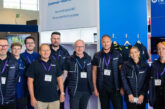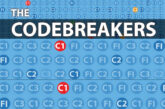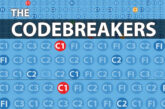
Need help with cracking those EICR codes? The technical team at NAPIT, with the help of the 18th Edition Codebreakers publication, answer your latest coding queries. Click on the photos for a closer look!
ANDY SCOTT: HAVING BEEN ASKED TO CHANGE SOME DOWNLIGHTS IN A BATHROOM OVER TO LED I CAME ACROSS THESE… THE TROUBLE IS THE WHOLE HOUSE HAS THESE FITTINGS INSTALLED (WELL OVER 100 OF THEM), SO WHAT SHOULD I DO NEXT?
Even though the engineer has found these thermally damaged transformers during an upgrade, they could easily have been identified on an EICR, or could they? If the engineer had found these on an EICR, they would most likely mark an observation and assign a code to them. An appropriate code would be a C2 for thermal damage for the sampled light fittings, and although correct, it may not give an accurate representation of the rest of the installation, or more specifically, if any other transformers are similarly installed. The problem is that with sampling, there is always a chance things can be missed. When we set Limitations for an EICR, right at the start of the inspection process, we generally decide on a sampling rate with the client. Any sampling rates chosen can either make a high-quality EICR (high sample rate) or a low-quality EICR (low sample rate).
Sampling can be applied to both circuits and accessories, and it’s important to understand that a sample is just that. If after sampling a small section of accessories, such as the transformers in the picture, any thermally damaged equipment should lead the Inspector to think about what could be going on elsewhere. If we find damaged equipment (not just thermally damaged) while sampling during an EICR, an inspector must always highlight this to the client; the easiest way to do this is to use the further investigation code FI, which will still result in an Unsatisfactory outcome for the EICR.
It is important to note that it may not be economically viable for the inspector to take on checking the remainder of the transformers, as this could take considerable time, and this may not have been budgeted for – hence the reason we use sampling. If the client agrees in the Limitations, before the inspection starts, that this kind of extra work can be undertaken during the EICR and agrees on a repair and costing contract with the inspector, then further accessories can be checked. This is entirely at the cost of the client, however.
To order your copy of NAPIT Codebreakers click here










